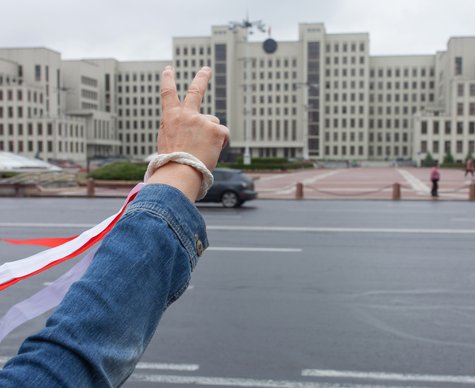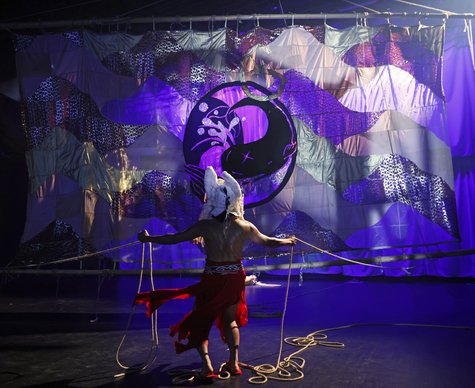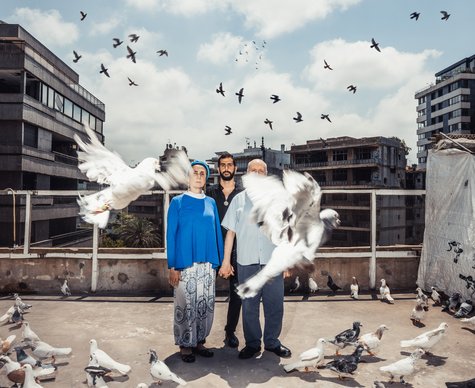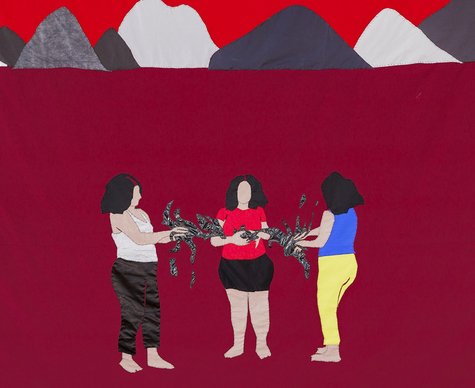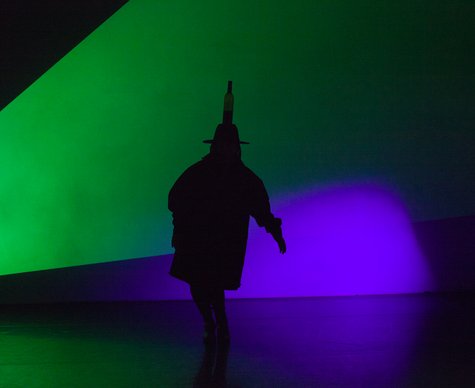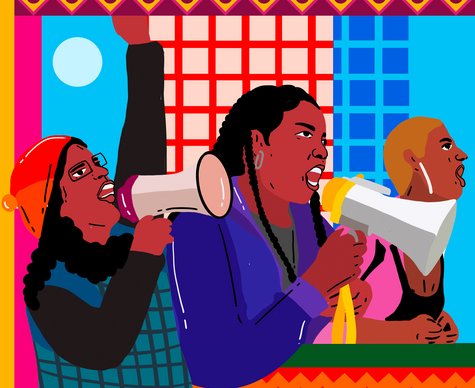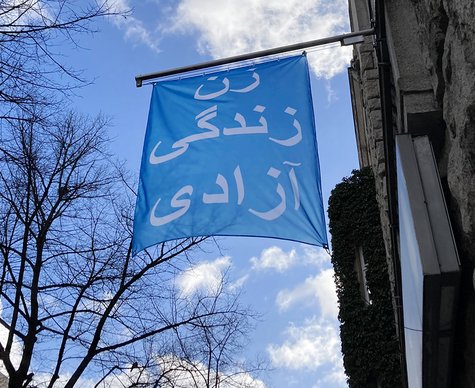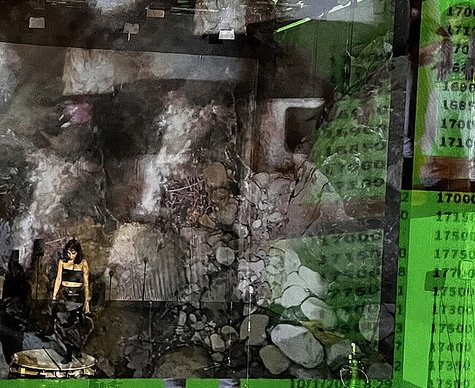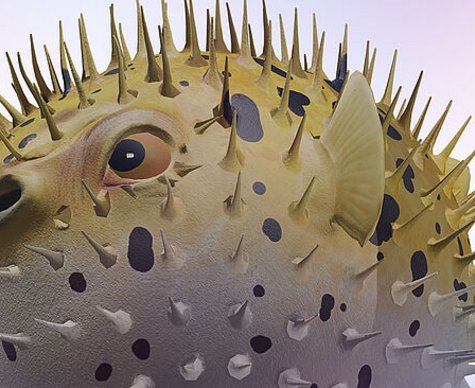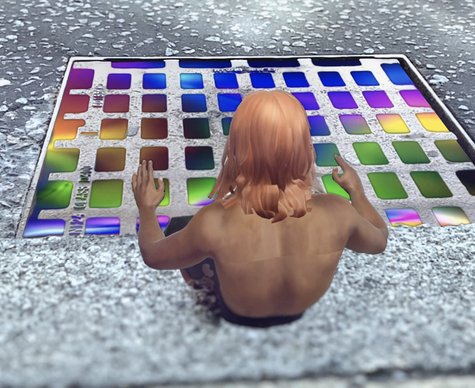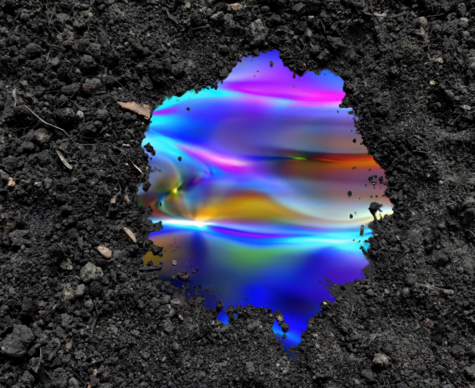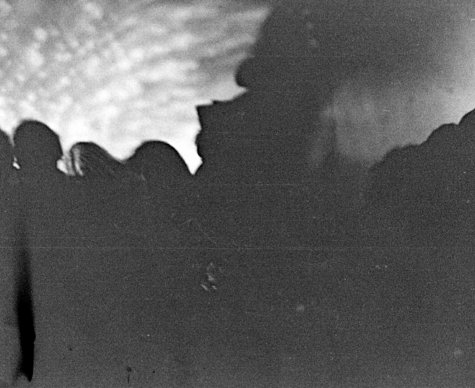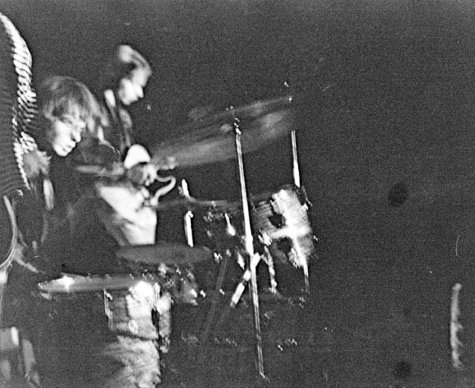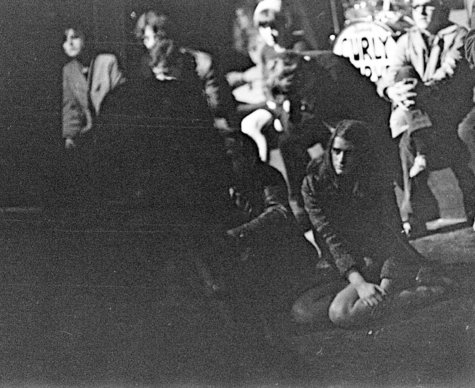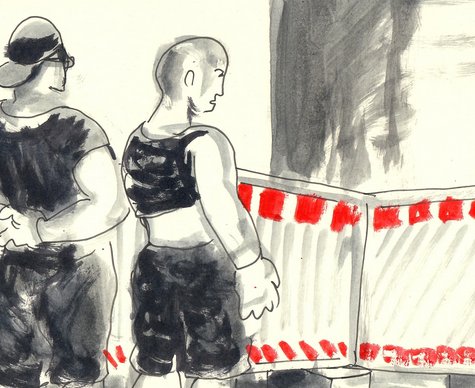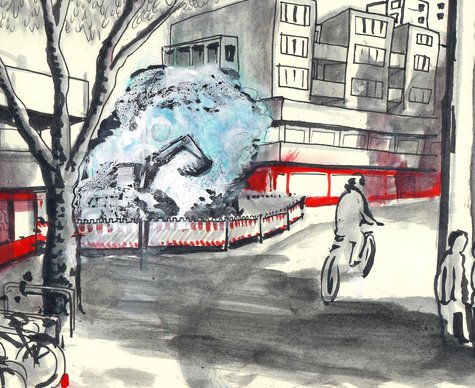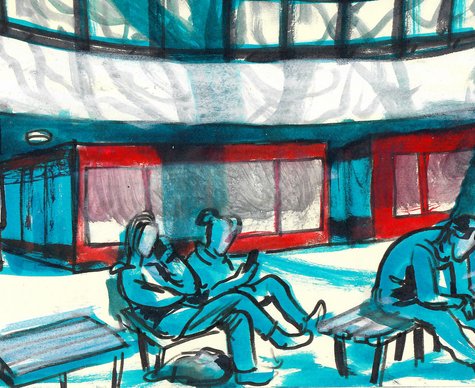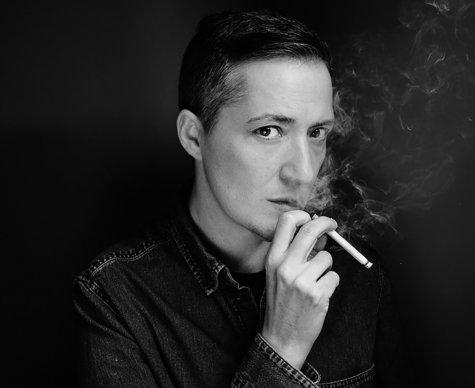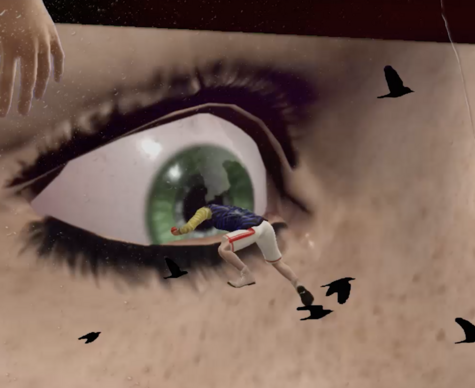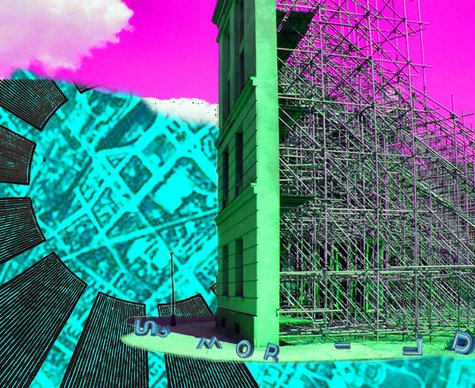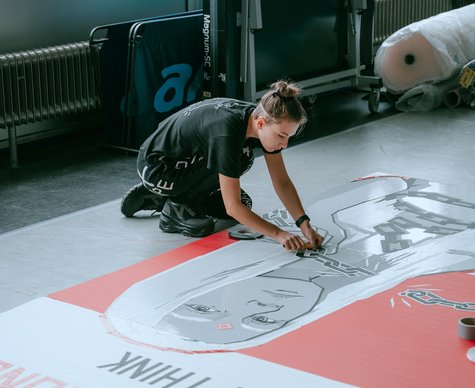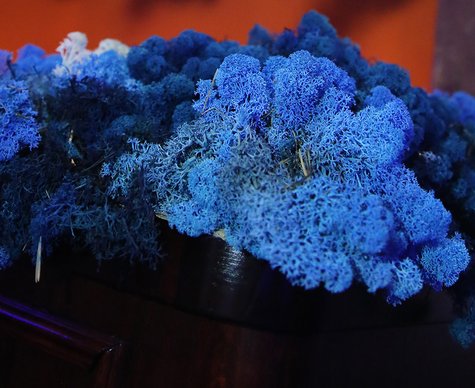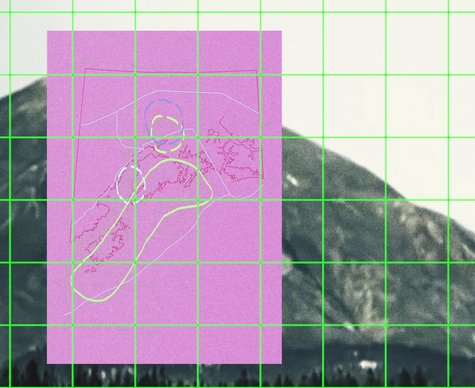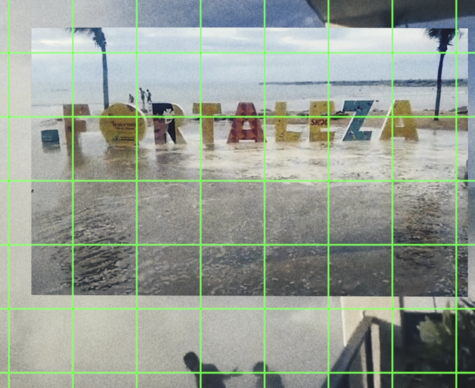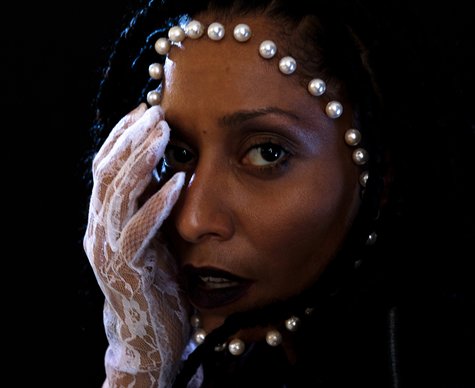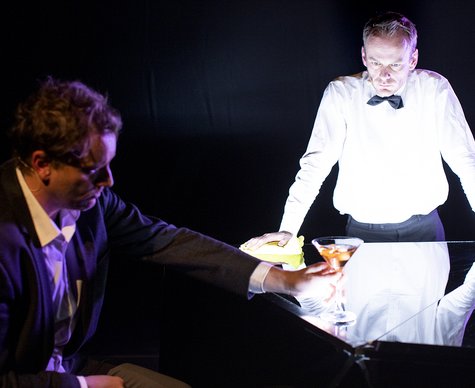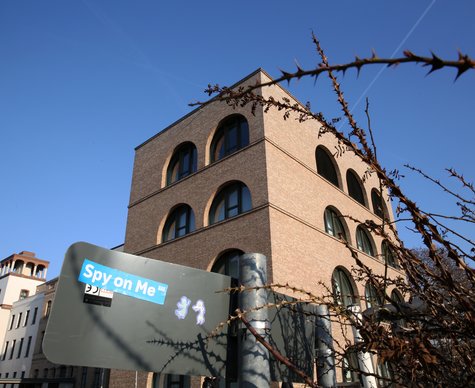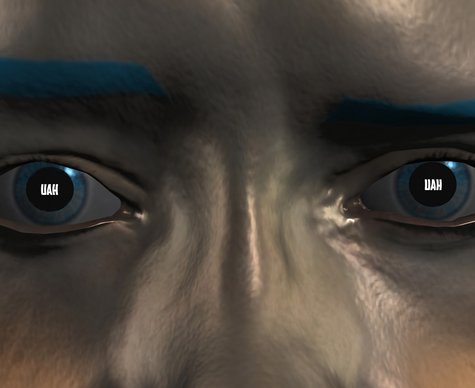Concept, Choreography, Documentation, Camera and Sound: : Olga de Soto / With:: Fabian Barba, Alessandro Bernardeschi, Edith Christoph, Hanna Hedman, Mauro Paccagnella, Enora Rivière, Olga de Soto / Testimonies:: Marina Grut, Ann Hutchinson Guest, Christian Holder, Joan Turner Jara, Nora Salvo, Jeanne Brabants, Michèle Nadal, Hanns Stein, Andras Uthoff, Edith del Campo, Philip Lansdale, Juan Allende-Blin, Toer van Schayk, Fernando García, Bruno Jacquin, Jacqueline / Video Direction:: Olga de Soto / Video Editing:: Julien Contreau and Olga de Soto / Music:: Frederic Rzewski —The People united will never be defeated, Variation nr. 1 / John Cage — Sonata nr. 1 und Sonate nr. 5 for prepared piano / Light:: Philippe Gladieux / Sound:: Mathieu Farnarier / Video Technique: Bram Moriau und Olga de Soto / Scenography Concept:: Olga de Soto and Shizuka Hariu / Scenography: : Shizuka Hariu / SHSH / Costumes:: Dorothée Catry / Technical Coordination:: Daniel Huard / Setup:: Yann Stroobant / Translation:: Christiane Gleis / Research Assistance:: Karin Verbruggen
Olga de Soto
Débords. Reflections on The Green Table
- Dance
Olga de Soto is one of the leading figures in a movement that converges in the medium of artistic research into 20th century dance history. In her current production she is working with “The Green Table,” a mythical work from 1932 by the German choreographer Kurt Jooss. It is considered one of the most emblematic and most politically engaged works in dance history. For her research, Olga de Soto evaluated the reports by eyewitnesses who had seen “The Green Table” in various periods and countries, also incorporating dancers from various generations who worked alongside Kurt Jooss. In her staging, Olga de Soto places the performers into an interaction with the eyewitnesses who are assembled and displayed on video but also with the technical devices set up for documentary purposes.
Production: Niels & Caravan Production.
Co-production: Joint Adventures/Tanzwerkstatt Europa (Munich), Les Halles (Brussels), Culturgest (Lisbon), Festival d’Automne à Paris, Les Spectacles vivants – Centre Pompidou (Paris), Tanzquartier Wien, Centre Chorégraphique National de Montpellier Languedoc-Roussillon (CCNM) in the frame of Jardin d'Europe – with support by the European Union, Open Latitudes (Les Halles-Brussels, Latitudes Contemporaines-Lille, Le Manège de Mons / Maison Folie-Mons, Cialo Umysl Foundation-Warsaw, Teatro delle Moire-Milan, Sin Arts and Culture Centre-Budapest, Le Phénix, Scène Nationale de Valenciennes, L’Arsenic-Lausanne) – with support by the European Union.
Funded by: Tanzfonds Erbe, an initiative by the German Federal Cultural Foundation.
With the support of: Federation Wallonia-Brussels, Archives Jooss (Cologne/Amsterdam), Deutsches Tanzarchiv Köln.
With the additional support of: Centre de développement chorégraphique d’Uzès and Théâtre de la Place de Liège.
This project has received research grants from the French Ministry for Culture and Communication and from the French Community Wallonie-Brussels for the development of the documentary.
Olga de Soto is supported by the Ministry of the French Community Wallonie-Bruxelles and is an artist in residence at Les Halles (Brussels) and in administrative residency at La Raffinerie – Charleroi/Danses, Centre Chorégraphique de la Fédération Wallonie-Bruxelles.
The project is supported by the European Commission.
Cast
Dates
Location
HAU2
Hallesches Ufer 34, 10963 BerlinThere are two marked parking spots in front of the building. Barrier-free restroom facilities are available. Four relaxed seats are available in the first row of HAU2. Tickets for wheelchair users and accompanying persons can also be booked via the ticketing system. If you need help, please contact our Ticketing & Service team at +49 (0)30 259004-27 or send us an email to
tickets@hebbel-am-ufer.de.
Latest information for arrival:
There is currently a construction site on Hallesches Ufer between Wilhelmstraße and Möckernbrücke underground station. There is a divided replacement route for pedestrians (right) and cyclists (left), which are separated by a yellow ground line. The carriageway is narrowed to one lane.
Travelling to HAU2 via U Hallesches Tor:
If you are coming from Hallesches Tor underground station, you will have to use an alternative footpath from Wilhelmstraße / Hallesches Ufer junction, which is separated from the carriageway by a construction fence – the actual footpath is currently closed. Please note: the alternative route is also used by cyclists. Pedestrians should keep to the right. We therefore currently recommend that visually impaired or blind visitors come to the HAU with an accompanying person.
Arrival HAU2 via U Möckernbrücke:
When you leave Möckernbrücke underground station, please stay on the footpath on the canal side until you reach Hallesches Ufer / Großbeerenstraße junction – the opposite side is currently closed due to construction work.























